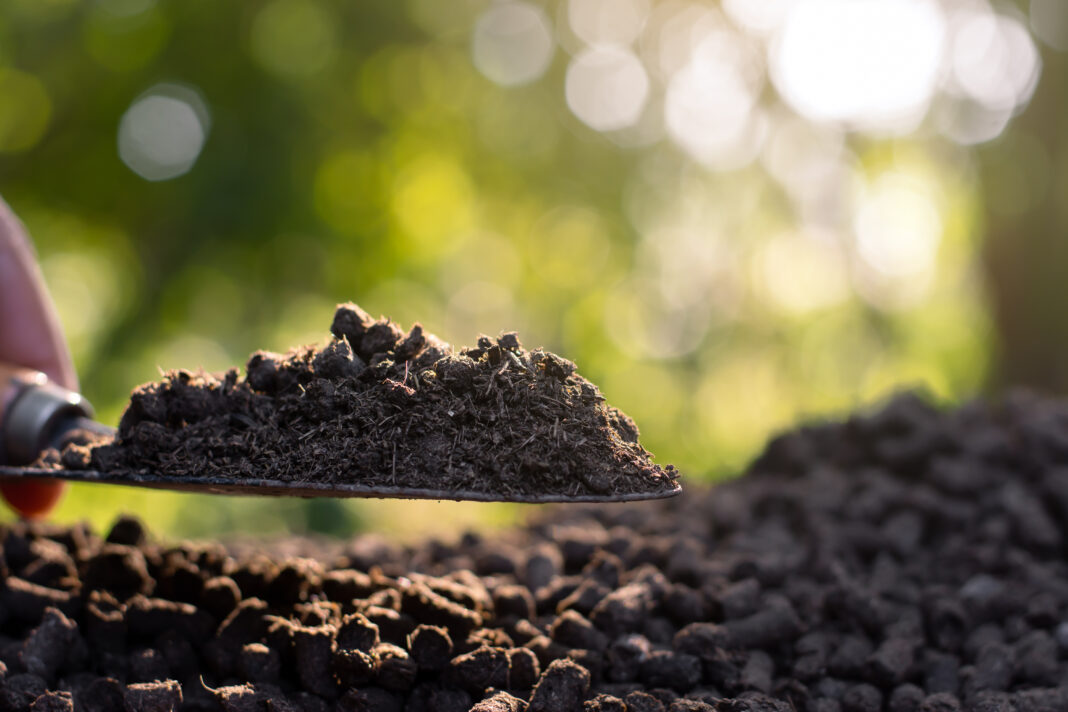While the conventional wisdom in agricultural circles has long emphasized a familiar set of essential nutrients, often relegating carbon to a less conspicuous position, it’s becoming increasingly clear that carbon’s role is foundational, extending far deeper than previously acknowledged. This element, often overshadowed by its more immediate chemical counterparts, is pivotal in fostering soil health and, by extension, enhancing the productivity of crops. The advent of regenerative agriculture practices has cast a new light on this overlooked aspect, illuminating the profound influence that soil carbon holds. This innovative approach not only underscores the necessity of carbon in fostering soil quality and boosting agricultural yields but also draws attention to its significant, far-reaching effects on building climate resilience.
Soil Organic Carbon And How To Increase It
The so-called soil organic carbon (SOC) consists of a variety of components including soil microbes, decomposing plant and animal matter, and the byproducts of decomposition. The process of measuring organic carbon in soil is crucial for understanding its concentration and distribution across land. Not less important is the understanding that its content is influenced by natural processes: photosynthesis, respiration, and decomposition. And these are in turn affected by climate factors like soil temperature and moisture. For instance, SOC levels are generally lower in arid areas compared to temperate and tropical regions.
So how do growers increase soil carbon storage across their farmland? Although gaining soil organic carbon is notably more challenging than losing it, there are practices that have proven effective. For example, adopting continuous no-tillage practices can incrementally increase soil organic carbon at the surface over time.
Implementing cover crops is another effective method to enhance soil carbon. They offer protection against soil erosion and foster the cycling of nutrients from the soil’s depths to its surface. The remnants of these crops act as a mulch, maintaining the soil’s coolness and moisture, and as this material breaks down, it contributes to the soil’s organic carbon content.
Additional farming practices like crop rotation and how crop residues are handled can also have a significant impact on the amount of carbon incorporated into the soil.
Furthermore, farmers who incorporate livestock into their practices have an excellent chance to boost soil carbon through the direct application of manure while allowing livestock to graze on cover crops or crop residues.
Climate Change & Soil Organic Carbon
Climate change urgently needs innovative responses, and one great yet often ignored solution lies right under us: soil. In the last 150 years, atmospheric carbon has surged by 30%, driving up global temperatures. And it’s important to understand the soil’s role in this. It’s a crucial ally in fighting climate change through carbon sequestration, a process that locks away carbon long-term in soils, vegetation, and other reserves. Remarkably, soil holds about 75% of the land’s carbon, triple the amount in living beings.
Soil Organic Matter (SOM) is key, consisting of decaying organic material and microorganisms, intertwined with soil minerals. Enhancing SOM boosts carbon storage and soil health, improving water retention, nutrient availability, and plant growth. This not only curbs erosion and preserves water quality but also bolsters food security and ecosystem health.
Experts believe soils, especially agricultural ones, could capture over a billion tons of carbon yearly. Yet, this storage is delicate, easily disrupted by climate change and industrial practices like deforestation for agriculture. Recognizing this, global efforts are underway to boost soil carbon storage, with a growing interest in initiatives aimed at measuring soil carbon and receiving soil carbon credits for achieving ‘net-zero’ emissions.
However, soil carbon sequestration isn’t just about combating climate change. It also offers a sustainable income for farmers through the process called “carbon farming.” By adopting greener practices, farmers can improve soil health, productivity, and resilience to climate changes, with potential earnings from a carbon credit project. Such projects are not only economically viable but also pave the way for a more sustainable agricultural future.
Future Perspectives
SOC plays a vital role in the health and functionality of terrestrial ecosystems. Unfortunately, in the past century and a half, human actions have altered the natural processes, leading to a reduction in SOC levels and multiplying the effects of global climate change. However, now there is a chance to reverse this trend by reintegrating carbon into the soil. The interaction of future climate change, historical land use, management practices, and the varied nature of landscapes will likely result in intricate patterns of SOC distribution. To face those challenges, there will most likely be a need for environmental monitoring solutions aimed at advanced collection and analysis of precious data necessary for smart decision-making. An example of such solutions could be satellite soil monitoring systems enabling remote yet effective observation of the soil’s state, including its organic carbon content.
Tapping into the potential of SOC can significantly enhance soil vitality and agricultural output. When devising programs aimed at sustainable soil utilization, the role of organic carbon must be carefully considered. It is crucial to focus on soil carbon management and the optimization of its use to forge effective strategies that support global food security.
Evidence is mounting that the planet’s climate is undergoing rapid changes due to the continuous release of CO2 and other greenhouse gasses from human activities, as noted by the IPCC in 2007. There is an urgent need to explore or develop policy measures that focus on soil and SOC, promoting practices that enhance SOC sequestration and stabilization as part of carbon footprint analysis and climate change mitigation efforts. In general, the effects of land and soil management on SOC, along with mechanisms to boost SOC levels, warrant ongoing scrutiny.


